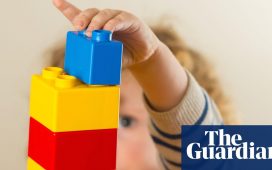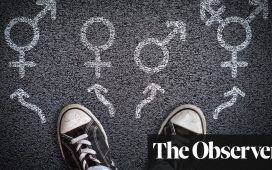getty
The 1776 Commission’s short, ignominious life produced a report that was widely reviled (and apparently a cut and paste job). It took less than a month to create the report, and just about three days to banish it from the official government web (some hard-right fans have preserved the text elsewhere). One commissioner has indicated that the group intends to continue plugging away. Good luck with that.
Beyond the historical distortions and hard-right baloney, the report contained some ideas about what education is supposed to do and how it is supposed to work. Those are worth looking at, because they really capture one of the central debates of education that underlies so many others. The commissioner’s ideas are wrong, but illuminating.
In a section about “authentic education,” the report asserts that Purpose #1 for education is to make students employable. But that, the report continues, can be followed by “liberal education” which it goes on to explain:
Education liberates human beings in the true sense—liberation from ignorance and confusion, from prejudice and delusion, and from untamed passions and fanciful hopes that degrade and destroy us as civilized persons. It helps us see the world clearly and honestly. In revealing human nature, it reveals what is right and good for human beings: authentic education is not “value-neutral” but includes moral education that explains the standards for right and wrong.
This is a singular view of not just education, but the very business of knowing and understanding the world. In the report’s view, there is One Way to correctly understand the world, and a fully educated person is “liberated” from any confusion about The Truth. The Truth also has a moral dimension—notice that it includes what is right and good for human beings, as if that is the same for all people on earth. In this view, the world can be neatly divided into right and wrong, black and white.
If that’s your view of how to understand the world, then education is a fairly simple act. The teacher (who has a full, unconfused grasp of what is right and wrong) simply lays out The Truth to the student, whose choice is to either A) accept what she’s told or B) be wrong. Assessing the student’s understanding is also simplified, because we don’t need to get into complex explanations; just demonstrate that you know the right answer. No essays needed; simple multiple choice or true-false tests will be sufficient. In fact, essay-style assessment probably should be used sparingly because it might give students the impression that there is something to be discussed, when in fact there is not—you either recognize The Truth or you don’t.
Folks with this narrow view of education and, for that matter, reality, have never had much patience with education that asks students to explore values or debate history or otherwise entertain the notion that different people can reach different conclusions about the same data or text. For them, “critical thinking” means only the mental discipline of not being fooled by all the false notions that try to spread confusion by contradicting The Truth. They are the defenders of settled truths, the people who would argue that an earth-centered universe with a creation-story origin doesn’t need to be challenged or discussed because we already know The Truth.
For other folks, the world is not that simple, and understanding involves a conversation that never ends. Education and confusion exist in permanent tension, an eternal loop in which the more we learn, the more questions we uncover, leading to a search for more answers, which in turn reveals more questions. This is not to say, as the Truth fans often claim, that we conclude that nothing is true or real. Only that the universe is beyond simple human grasp.
It’s not a new concept. The Socratic paradox is variously translated versions of “I know that I know nothing,” sometimes turned into the poster-worthy quote, “The more I learn, the less I understand,” which has been attributed to Einstein and used by various songwriters.
But in education, this debate leads to two entirely different models. For Truthers, education is simple and straightforward, like pouring water into a bucket. The teacher delivers the Truth to the student in the form of facts or skills, then uses an objective test to determine how well the student has absorbed the learning. The path of learning is one straight path, and all students travel along that single path. This is the model that assumes that teachers are simply content delivery units, and that anyone armed with a proper description of the one true path can push students down it. This is the model behind the current panic over learning loss, in which some folks imagine that the student buckets are leaking, the learning evaporating, or that students have sat down in the middle of that one true path, going nowhere.
For the rest of us, education is the building of a relationship between a student and the world, not always straightforward, and always, like history, part of an ongoing evolving conversation. Learning is a wide open expanse, with many possible paths and always the opportunity to blaze new trails. Aiding students in their journey requires both knowledge and art, and assessing learning a complex activity. And there is often confusion, traveling hand in hand with curiosity.
The 1776 Commission was hampered not just by a poor conception of history, but a mistaken conception of education. The notion that you can just pour education into students and—voila!—now they are all patriots who believe the same single Truth about our nation is absurd magical thinking. But while the commission may be gone, the mistaken ideas about how education works are still with us.


